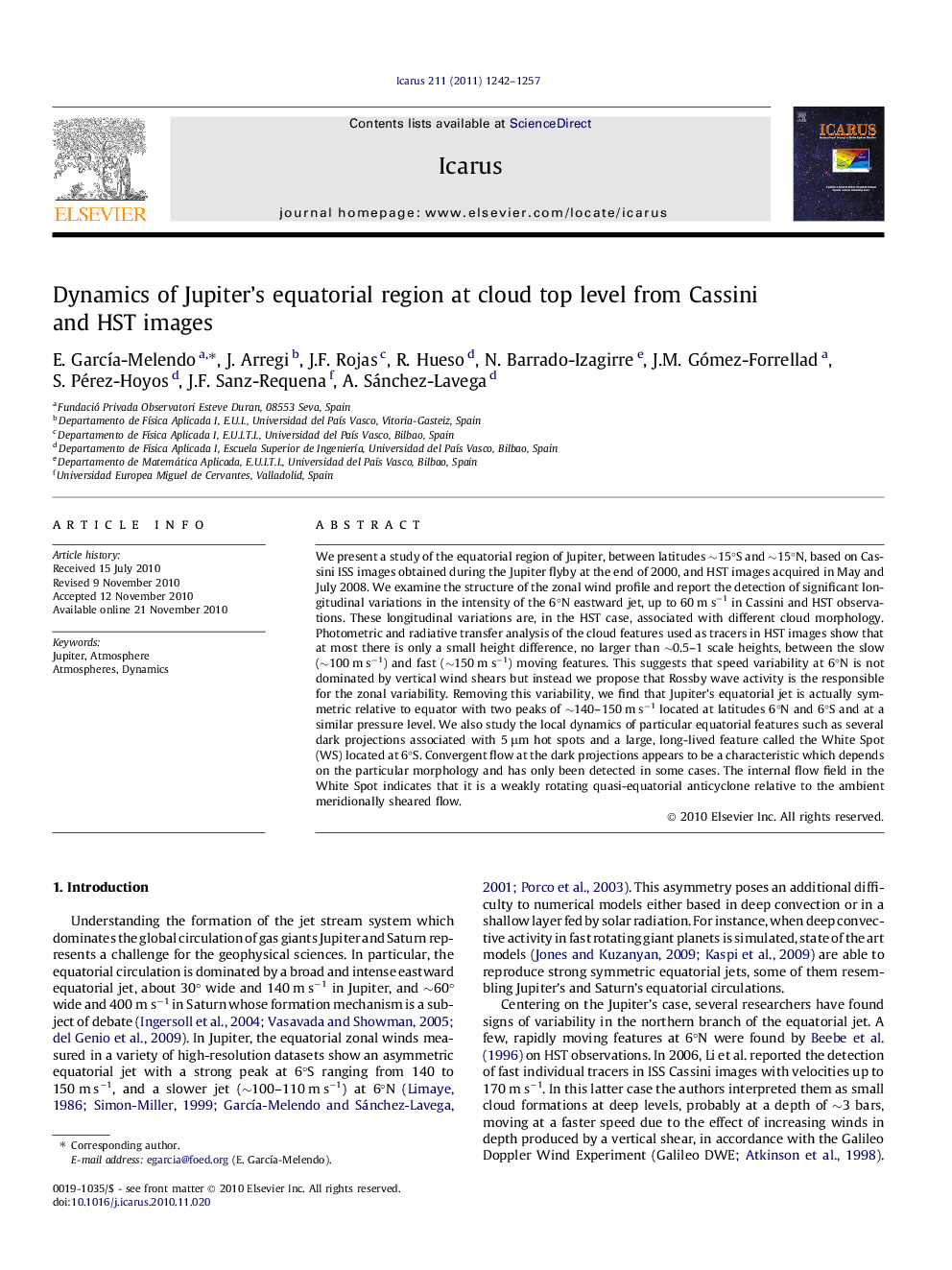| کد مقاله | کد نشریه | سال انتشار | مقاله انگلیسی | نسخه تمام متن |
|---|---|---|---|---|
| 1773953 | 1021152 | 2011 | 16 صفحه PDF | دانلود رایگان |

We present a study of the equatorial region of Jupiter, between latitudes ∼15°S and ∼15°N, based on Cassini ISS images obtained during the Jupiter flyby at the end of 2000, and HST images acquired in May and July 2008. We examine the structure of the zonal wind profile and report the detection of significant longitudinal variations in the intensity of the 6°N eastward jet, up to 60 m s−1 in Cassini and HST observations. These longitudinal variations are, in the HST case, associated with different cloud morphology. Photometric and radiative transfer analysis of the cloud features used as tracers in HST images show that at most there is only a small height difference, no larger than ∼0.5–1 scale heights, between the slow (∼100 m s−1) and fast (∼150 m s−1) moving features. This suggests that speed variability at 6°N is not dominated by vertical wind shears but instead we propose that Rossby wave activity is the responsible for the zonal variability. Removing this variability, we find that Jupiter’s equatorial jet is actually symmetric relative to equator with two peaks of ∼140–150 m s−1 located at latitudes 6°N and 6°S and at a similar pressure level. We also study the local dynamics of particular equatorial features such as several dark projections associated with 5 μm hot spots and a large, long-lived feature called the White Spot (WS) located at 6°S. Convergent flow at the dark projections appears to be a characteristic which depends on the particular morphology and has only been detected in some cases. The internal flow field in the White Spot indicates that it is a weakly rotating quasi-equatorial anticyclone relative to the ambient meridionally sheared flow.
Research highlights
► There are up to 60 m/s longitudinal variations in the 6°N eastward jet in Jupiter.
► Zonal flow at Jupiter’s equator at 6N is dominated by Rossby wave activity.
► Jupiter’s equatorial jet is symmetric with 140–150 m/s peaks at 6N and 6S.
► Convergent flow at the NEBs dark spots depends on the particular cloud morphology.
► The White Spot at the SEBn is a weakly rotating quasi-equatorial anticyclone.
Journal: Icarus - Volume 211, Issue 2, February 2011, Pages 1242–1257